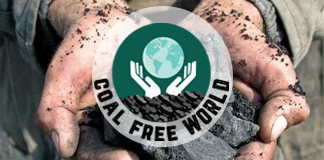Over the past week, European thermal coal indices adjusted below 103-104 USD/t. Pressure on prices was caused by a sharp drop in gas and oil quotes, following the introduction of higher import duties by the US, as well as the end of the heating season in the EU.
Gas quotations at the TTF hub fell to 380.98 USD/1,000 m3 (-78.93 USD/1,000 m3 w-o-w), reaching a 7-month low. The level of European gas storage reserves fluctuates at 34%. Coal stocks at ARA terminals decreased to 3.51 mio t (-0.11 mio t w-o-w).
South African High-CV 6,000, after rising a week earlier, dipped below 89 USD/t, following the European market, while Medium-CV material strengthened on improved demand from Indian sponge iron producers for spot deliveries and April-May contracts.
Botswana-based Minergy said in its report that the weaker prices in the export market forced some smaller companies and high-cost producers to reduce export shipments and divert supplies to the domestic market. Because of the negative dynamics, Minergy racked up debt.
In China, spot prices for 5,500 NAR coal at the port of Qinhuangdao held at 93-94 USD/t despite the negative external background after the escalation of the trade war between China and the US (announcement of reciprocal duties by China on all products from the US at 34% and additional increase of tariffs by Trump to 104% on products from China).
Market sentiment was supported by declining stockpiles and the initiative of the state investment fund Central Huijin Investment, which channeled funds to buy Chinese stocks and promised to maintain market stability.
Furthermore, some market participants believe the Chinese authorities are close to launching a new round of economic stimulus to boost domestic consumption and reduce dependence on exports.
Most end consumers refuse to pay for shipments from non-state-owned companies under monthly contracts at a fixed price of 770 RMB/t (105.36 USD/t) FOB Qinhuangdao 5,500 kcal/kg. Thus, a dispute over long-term contracts continues between Chinese generating companies and domestic coal suppliers, which drew the attention of the National Development and Reform Commission (NDRC).
Inventories at the 9 major ports fell to 29.72 mio t (-1.04 mio t w-o-w), while coal stocks at the 6 largest coastal TPPs totaled 13.51 mio t (+0.01 mio t). The consumption increased to 760 kt/day from 750 kt/day a week earlier.
Indonesian 5,900 GAR slipped to 83 USD/t, the price of 4,200 GAR plunged to 48.95 USD/t, continuing to move lower amid limited trading activity due to the celebration of the end of fasting (Uraza Bayram or Eid al-Fitr) until April 8. There is also weak demand from India and China, where production rates remain steady and inventories stay at high levels. Ongoing rains in Sumatra, negatively affecting coal transportation, failed to provide tangible support to the market.
Australian High-CV 6,000 sagged below 95 USD/t, while Medium-CV rose slightly with price volatility attributed to geopolitical uncertainty and low demand in the Asia-Pacific.
The Queensland state authorities are planning to revise the previous government’s targets for reducing greenhouse gas emissions, that may result in extending the lifespan of coal-fired power plants, potentially benefiting Australia’s energy security.
Australia’s HCC metallurgical coal index surged to 177 USD/t on worries of tightening supply, stemming from several mine accidents in late March and early April. Moreover, on April 9, Trump froze for 90 days the imposition of high duties against trading partners.
Quotes were backed by the suspension of the Appin (South32) mine in New South Wales on April 6 after an explosion that injured 4 people, and the Moranbah North (Anglo American) mine in Queensland, where mining was halted on March 31 due to exceeded carbon monoxide concentrations. Despite expectations, Anglo American was unable to promptly resume production. The potential loss of volumes is not currently being disclosed.




